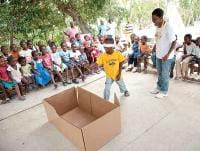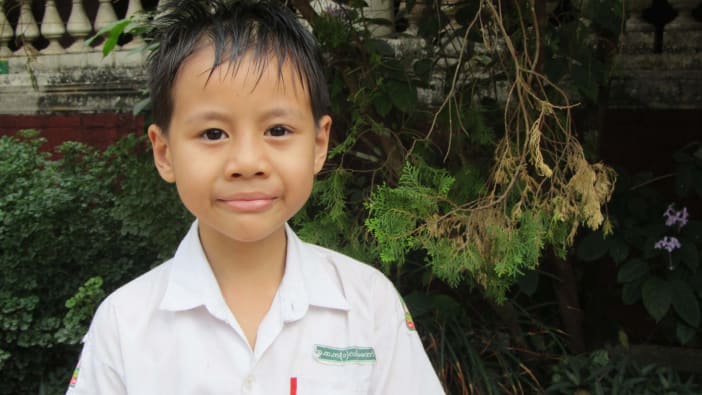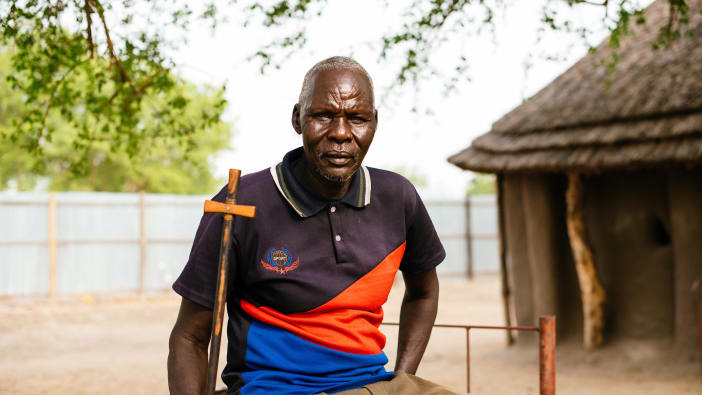Each year almost 750,000 children around the world are caught up in disasters and can be greatly upset by the experience of being displaced, losing loved ones and friends.
The local community can act to ensure the safety of children, and to help them to come to terms with their experience. In order to restore some regularity to the lives of these children, churches or other community organisations can offer ‘children’s clubs’. These can include activities which help to rebuild their ability to play together, and to regain their sense of hope and social well-being. Clubs also provide them with an opportunity to learn, for example, about health. This will be especially important in situations where children have been separated from their families. In areas of frequent disaster, the church could consider having a small team of people trained to do counselling with children in a safe and supportive way.
Children’s clubs in Haiti
In the aftermath of the Haiti earthquake, Tearfund set up about 70 children’s clubs around Léogâne, some in association with local churches. One of them was led by sisters Françoise and Monette. One hundred and thirty children, aged three to 14, attended two or three times a week. They learnt children’s songs about healthcare and disease prevention and were provided with a safe place where children could be children again. Françoise and Monette’s enthusiasm for the club and passion for children’s education made an enormous difference; the club became one of the most exciting places to be for the children of the area. It helped them to cope with the trauma of the earthquake and to learn important messages about health.

Articles
Children in post-disaster situations
Each year almost 750,000 children around the world are caught up in disasters and can be greatly upset by the experience of being displaced, losing loved ones and friends
Available in English, French, Portuguese and Spanish

From: Managing disasters – Footsteps 88
How to prepare for disasters and reduce the risk of them occuring

Education Supervisor Tamara Olicoeur teaches children in Siloye Village, Haiti, about hygiene and sanitation. Photo: Richard Hanson/Tearfund
Child protection
It is a sad reality that there are people who try to exploit and abuse children, often targeting those who are vulnerable after a disaster. Children separated from their families are at risk of being abducted, trafficked, exploited or harmed. Churches may be able to create ‘safe places’ for such children, in either urban or rural locations. They can ensure such children are looked after, given protection from people who wish to harm them, and where possible reunited with and reintegrated into their wider family. It is important that organisations and churches have child protection policies and procedures to make sure they create a safe place for vulnerable children.
Helping traumatized children to heal
Children who are severely traumatised may find it difficult to express – or even name – their feelings. The following activities may help:
- In some situations where children have lost parents or close relatives, it may be appropriate to assemble a ‘memory box’ of all the things they appreciated about the person they have lost. When a child misses that special person, they can feel close to them when they open the box.
- First ensure that there are trained counsellors ready to support the children who participate in this exercise.
- Give each child a large piece of paper and some coloured pencils.
- Invite them to draw a picture of their journey to where they are now and the experiences they had along the way, including times of fear.
- With the help of trained counsellors, take time with each child to talk about what they have drawn and what they felt in each situation. Discussion in a bigger, open group will be too distressing for many of the children, so small groups are best. Ensure that counsellors allow children to discuss deeper feelings at their own speed.
Share this resource
If you found this resource useful, please share it with others so they can benefit too.

Subscribe to Footsteps magazine
A free digital and print magazine for community development workers. Covering a diverse range of topics, it is published three times a year.
Sign up now - Subscribe to Footsteps magazine





